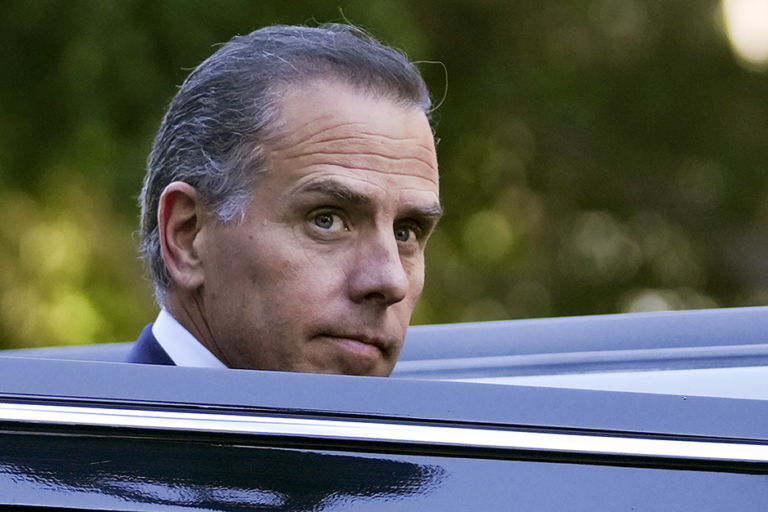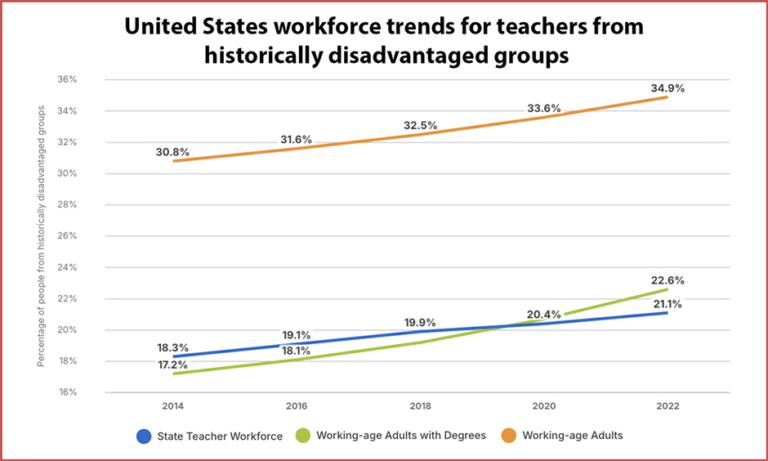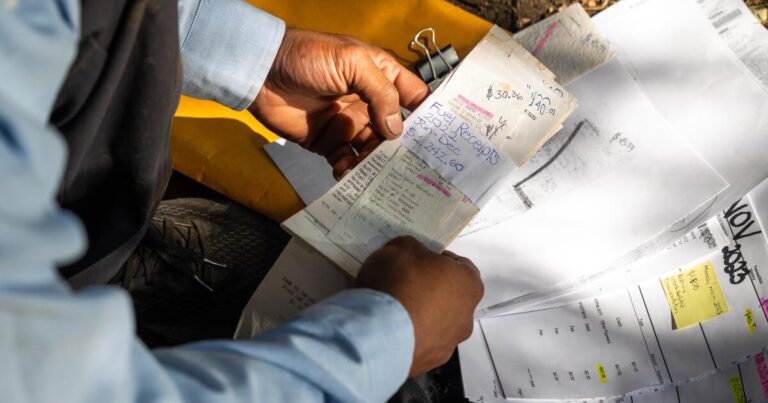He had plans for reassembling his life after 10 years in prison. Big plans.
Step one was opening a party-supply company, an idea that came to him while he was locked up. He’d start small — stick to quinceañeras and graduation parties at first. Then someday, maybe, level up to bigger corporate events, whose organizers wouldn’t mind splurging for large tables, inflatable bounce houses and those fancy satin-covered chairs from home design magazines.
To jump-start his dream, the formerly incarcerated entrepreneur was counting on money from the City of Los Angeles, specifically a $30 million settlement fund for thousands of Angelenos affected by anti-gang injunctions, court orders used by law enforcement since the 1980s to restrict which places a person can frequent.
After a federal court found curfews included in the injunctions unfairly punished people based on their neighborhood or family ties, the city agreed to pay up to $7.5 million annually over a four-year period that ended in 2021. Anyone targeted by L.A.’s injunctions challenged in the lawsuit is eligible to benefit, even if they were not arrested for curfew violations.
Around 6,000 class members were eligible to receive a portion of that money, but city data cited in court filings shows that seven years later less than a quarter of them have actually been compensated, with around half of the fund left untapped.
In recent months, attorneys for the class members have returned to court to force the city to explain the reason for the undistributed funds. With administrative costs accounting for a third of the total spent so far, according to court records, the judge presiding over the case ordered a forensic audit.
The man who spoke to The Times about his party supply business is among those left frustrated. He asked to remain anonymous, citing concerns that authorities might retaliate against him for speaking out and that he might lose potential customers over his criminal record.
He said the past few years have turned into a nightmare of unanswered phone calls, misplaced checks and case managers who didn’t seem to be talking to one another. An attorney representing him provided documentation showing he was entitled to payouts from the lawsuit.
“They try to keep their foot on your neck, you know,” he said, referencing city officials in charge of administering the $30 million.
Others trying to collect their share say they have been forced to jump through all sorts of hoops — or told time has run out, plaintiff’s attorneys say. Some beneficiaries have reported being kept in the dark about what types of services are covered for reimbursement by the settlement, which sets aside funds for rent and utilities payments, but also other expenses such as funeral costs, work clothes and transportation.
The city’s economic and workforce development department, which is overseeing the payouts, said in an email that it does not comment on pending litigation. In court filings, the city has argued that it fulfilled its obligations under the settlement and kept the program up and running past its original 4-year timeline.
The city has also argued that it is prioritizing payouts for new enrollees, but Ghirlandi Guidetti, a lawyer for the plaintiffs, remains unconvinced. Guidetti said that doesn’t explain why some have been told they are only eligible for $10,000 or less, citing as an example the class member with the party-supply business.
His case, Guidetti says, is “one of several where problems are brought to our attention.”
Guidetti and the businessman provided court records, financial documents, and other materials detailing his struggle to get paid.
His problems began more than a decade ago, when he was detained while visiting the home of a relative in a part of Northeast L.A. that has long been controlled by the Avenues gang. He denies ever being actively involved in a gang, but he still faced criminal charges that led to his decade behind bars. When he got out, he said he wasn’t looking for a handout but when someone told him about the curfew settlement fund it seemed to offer an unexpected lifeline.
He felt confident about being accepted, saying that he showed up to his first appointment after rehearsing his business plan. To prove his sincerity, he carefully fished a stack of manila envelopes from backpack he carried around and showed them to a reporter. Inside were the numerous trade certificates he’d earned over the years, along with letters of recommendation and business receipts, which he kept in neat stacks held together by different colored binders to denote the month.
He recounted his frequent trips to one of the city’s WorkSource Centers when he was turned away for supposedly not having the right paperwork. Then, he was told by his case manager that his payout was capped at about $6,000 — far less than the $10,000 to which a lawyer told him he was entitled. Other times he couldn’t get anyone to call him back, or got mixed advice from different people he spoke to. But the real shock came when on he learned that, according to the city’s books, he had already received three checks, totaling thousands of dollars. That was news to him.
After months of appeals, he said, officials admitted they erred and mistakenly issued the funds to someone else with a similar name. He never received an apology.
City officials said in court filings the plaintiffs have only shown “evidence of less than 20 class members who had issues who had difficulties” collecting money. Officials said they have spent hundreds of thousands of dollars to get word out about the settlement through advertising. The city also argued it shouldn’t be held responsible for incorrect information passed along by employees at the WorkSource Centers who are responsible for distributing the funds.
The class members “proved to be a more difficult population to work with than (the department) had dealt with before, and they have required significantly more staff time to provide the support needed than originally envisioned,” the city argued in filings.
With millions left unclaimed, the plaintiffs suspect that many people in line for money are either unaware or reluctant to engage with a court system that in the past has only punished them.
In September, U.S. District Judge Dolly Gee acknowledged the city’s “good-faith effort to engage in implementing the program” in light of pandemic and staffing shortages, but said officials had ultimately failed to hold up their end of the bargain.
“There was a contract. That contract was breached,” Gee said, according to a transcript. “I’m not saying that was in bad faith or because of nefarious motives, but that’s part of the reason why I’m ordering an audit so that we can figure out what are the facts with regard to some of those costs.”
The settlement dates back to a class-action lawsuit stemming the June 2009 arrest of a teenager named Christian Rodriguez for violating a curfew near his home in the Mar Vista Gardens housing project, a stronghold of the Culver City Boys gang.
Rodriguez’s attorneys maintained he was only included in the injunction because of an older brother’s gang ties, and courts eventually agreed the law was discriminatory — although authorities can still seek injunctions under narrower circumstances.
Cities across the state have been using anti-gang injunctions since the late 1980s, when gang violence, fueled by drug turf wars, escalated to unprecedented levels. Civil court orders issued by judges, the injunctions are designed to disrupt gang activity by restricting people from wearing clothes with gang colors or insignia; associating with friends, or even family members; or engaging in certain activities in so-called “safety zones” considered to be havens for specific gangs. Violators can be charged with contempt and face up to six months in jail.
Scott Frus, a retired LAPD gang lieutenant, said that until a few years ago, police and prosecutors still enforced dozens of injunctions across the city. He defended the orders as an imperfect but necessary tool for policing neighborhoods besieged by gang violence, while adding that authorities were “very diligent in supporting the documentation” of those targeted.
“We didn’t just go out and say, ‘OK, you’re on the gang injunction,’” said Frus, who was in charge of the anti-gang squad in Hollywood when he retired in February 2023.
With gang activity following a general downward trend in crime overall across Los Angeles, there has been growing debate about whether the injunctions still make sense, especially given the past legal challenges. At a press conference in Watts earlier this week, city and police leaders touted the latest crime statistics which showed a roughly 50% reduction in gang homicides from this point last year.
Ana Muñiz, an assistant professor of criminology, law and society at UC Irvine who worked on the Rodriguez case, said injunctions grew out of “white panic over the crack epidemic and the war on drugs” of the 1980s and early 1990s. In the years that followed, Muñiz said, such policies unfairly targeted countless young African Americans and Latinos who were not affiliated with any kind of criminal organization, for simply being outside in public spaces.
“Gang injunctions are about racial profiling. They’re about confining — particularly people of color, particularly Black men — to certain parts of the city,” she said, likening them to vagrancy laws passed after the abolition of slavery that tightly restricted free movement for recently freed Black people. “We replace the explicit reference to Black men with the coded language of going after gang members.”
The injunctions have had had unintended consequences — such as families being “blacklisted” from public housing, according to Tina Padilla, executive director of a Northeast Los Angeles-based gang interventionist group called Community Warriors 4 Peace.
“Apartment managers would have a list and wouldn’t rent to you if you’re from certain streets,” she said.
Enforcement of neighborhood-wide curfews and other sweeping injunctions inevitably leads to racial profiling, Padilla said, forcing family members to carefully plan their social lives and home visits, or risk arrest just because they are “seen talking to your primos and primas.”
Some people are arrested without being given a chance to show they aren’t gang members. Just wearing the wrong clothes or standing on the wrong block could lead to problems with the police, according to Padilla, whose group quells gang violence through diplomacy and social work.
“If I feel wearing my Nike Cortez and I want to wear a flannel because it’s cold, I don’t want to be part of that, because I dress a certain way and I want to visit my family on Drew Street,” she said.
Padilla’s organization has worked with the formerly incarcerated man who started the party supply company, and he shared her view that injunctions led to discrimination and left a stigma he still feels today.
Without the settlement money from the city, he said he took out loans from the bank and borrowed from his retirement fund to cover the $30,000 he has already poured into his business. He said he’s had to turn down opportunities because the jobs called for more chairs and tables that he could afford.
He doesn’t want to come off as ungrateful about the settlement, but said it’s hard not to feel as though he’s still having to answer for his past: “I know how they’re thinking of us — like ‘They’re a bunch of thugs, they’re a bunch of lowlifes … why should we [pay them]? They don’t deserve no money, period.’”

















